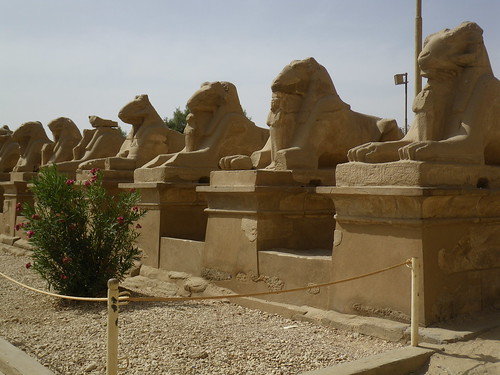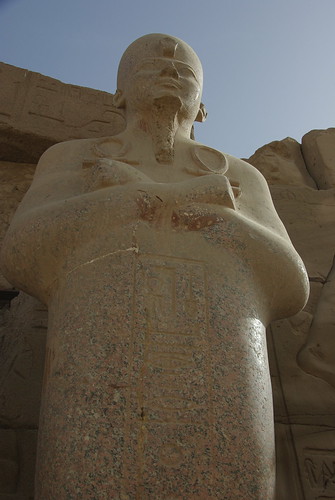Egypt may be a touristy place but it is also extremely backpacker friendly with a rather large selection of budget accommodation options in all major tourist spots as well as 50% student discounts at most attractions with a student ID, including an ISIC card.
 Transportation: Getting up and down the Nile is best done by overnight train. Egyptian security conditions, or at least the Egyptian Government’s opinion of those conditions, is always changing meaning that other options may or may not be available. For planning purposes best to expect to use one of the more expensive trains to travel between Cairo, Luxor and Aswan. Sinai is connected to Cairo by daily bus service.
Transportation: Getting up and down the Nile is best done by overnight train. Egyptian security conditions, or at least the Egyptian Government’s opinion of those conditions, is always changing meaning that other options may or may not be available. For planning purposes best to expect to use one of the more expensive trains to travel between Cairo, Luxor and Aswan. Sinai is connected to Cairo by daily bus service.
Aswan: Aswan does not hold the same ‘must see’ status that Luxor does. If you have extra time by all means it is worth including as it does hold some fantastic sites but if you’re a bit short then you won’t miss out too much. The Temple of Isis is truly magnificent, if not completely rebuilt in the modern era, and the region is covered with various Nubian artifacts and restored temples from when Nubia was downed under the rising waters of Lake Nasser. A trip to Abu Simbel could be a way to top off any trip to Aswan, and might even be your entire reason for going, but choose wisely as most trips depart Aswan at 3am, leaving you a bit tired for your big tour. Get to Aswan from Cairo via either overnight train or a short flight. Transportation options to Luxor will likely include either bus or train; at the time of writing, caravans are no longer used by the police along this route.
If visiting Aswan from Luxor you will also have the option to book a Nile cruise to take you to and from Aswan. These typically are all inclusive and run anywhere from $50 to $500 per person per night, quality naturally varies immensely.
Luxor: The ancient city of Thebes in all its glory. This city just bleeds Egyptian history from the impressive Luxor Temple right downtown to the incredible Karnak temple that even played a role in a James Bond flick. Just outside of town are the valleys of the Kings and Queens (home to some rather impressive tombs and more tourists Disney) as well as more temples than you can shake a stick at. The options abound and you could feel quite satisfied after only a couple of days, but even if you spent a full week you probably couldn’t see everything. Lodging options abound, as to tour packages so be careful when booking.
 Cairo: A big and bustling city but you probably came here for more than just the shwarma… you came here for the Pyramids and the Egypt Museum. Unless you are the first in line at the pyramids there isn’t much reason to getting up early as they will be packed from 8am on till closing. We have been told the extra money one must pay to enter the pyramid’s is not worth it so if you are considering this, do think twice. The Egypt Museum is rather impressive to look through but if you’re the type who likes organization and the ability to learn something you will either need to hire a guide or be prepared to be disappointed.
Cairo: A big and bustling city but you probably came here for more than just the shwarma… you came here for the Pyramids and the Egypt Museum. Unless you are the first in line at the pyramids there isn’t much reason to getting up early as they will be packed from 8am on till closing. We have been told the extra money one must pay to enter the pyramid’s is not worth it so if you are considering this, do think twice. The Egypt Museum is rather impressive to look through but if you’re the type who likes organization and the ability to learn something you will either need to hire a guide or be prepared to be disappointed.
Sinai: Dahab and Sharm el Shek are the two main attractions on the coast. Both offering all you could ever want in the form of beach and underwater excitement with some of the best diving available on the planet. The difference between the two is that Sharm is where the nice hotels are and Dahab is where the backpackers go. Tours to Mt Sinai can be booked from either location but for our money it is better to base yourself in St. Catherine’s and climb Mt. Sinai by day rather than to take the package trip and climb by night…cheaper as well. There is also a ferry service across the Red Sea but we were told that the bus through the canal zone is actually faster, more reliable, and cheaper.
Onward Travel:
Israel: The only land border open to US citizen and most others without prearranged visas, this is straight forward but can be nerve wracking if you have any other Arab visas in your passport.
Jordan: The ferry to Acaba is straight forward if not always running late. Be prepared to spend the day dealing with this two hour crossing. If you want to get to Petra the same day you should prepare to put a group together while on the ferry to share a private tax.
Sudan: The Aswan ferry to Sudan runs a bit more according to schedule but it is long and uncomfortable. Choose a spot on the port deck (Northbound) if planning to sleep outside so that the morning sun doesn’t hit you dead on.
Just to underscore what you say about getting a guide for the Egyptian Museum. Display pieces – at least when I went, far too many years ago – were labelled only with a tag giving the name of the piece; no history, no context, nothing. Of course, my travel buddies and I decided we had to do the guide on the cheap, and that, IMHO, is probably even a bigger mistake. We went through the museum with this barely literate (in English, anyway) middle-aged man, who would pause now and again to say something like, “Rosetta Stone. Very, very old.”
There are legitimate security concerns in Egypt, and it is not obvious that the Egyptian government is equipped to address them. So, campers, you are on your own. I think it is worth it, though – really an incredible amount of history in this country, and it is quite sobering to see how a once-great center of civilization has sunk through the ages. Shelley wrote Ozymandius for a reason.
My other vignette memories of Egypt were getting a gang of young people together to go and eat pizza at the Nile Hilton, and on leaving, having the headwaiter run after us because we had unintentionally shorted him; and the fifth-floor hotel where we stayed that had an elevator that only reached the third floor – you had to climb the last two storeys, there to be greeted by a grinning, turbaned Egyptian with a lazy eye who showed you to your shared rooms and explained how the shared toilets (no toilet seats) worked.